The only thing worse than localism is foreignerism.
And since a lineup is nothing more than a limited-resource microcosm for human society in general, it’s only reasonable that, with more people comes more problems. And with surfing’s steady amalgamation into the mainstream, we can’t assume everyone we’re sharing the lineup with these days was taught the same travel etiquette the rest of us consider common sense.
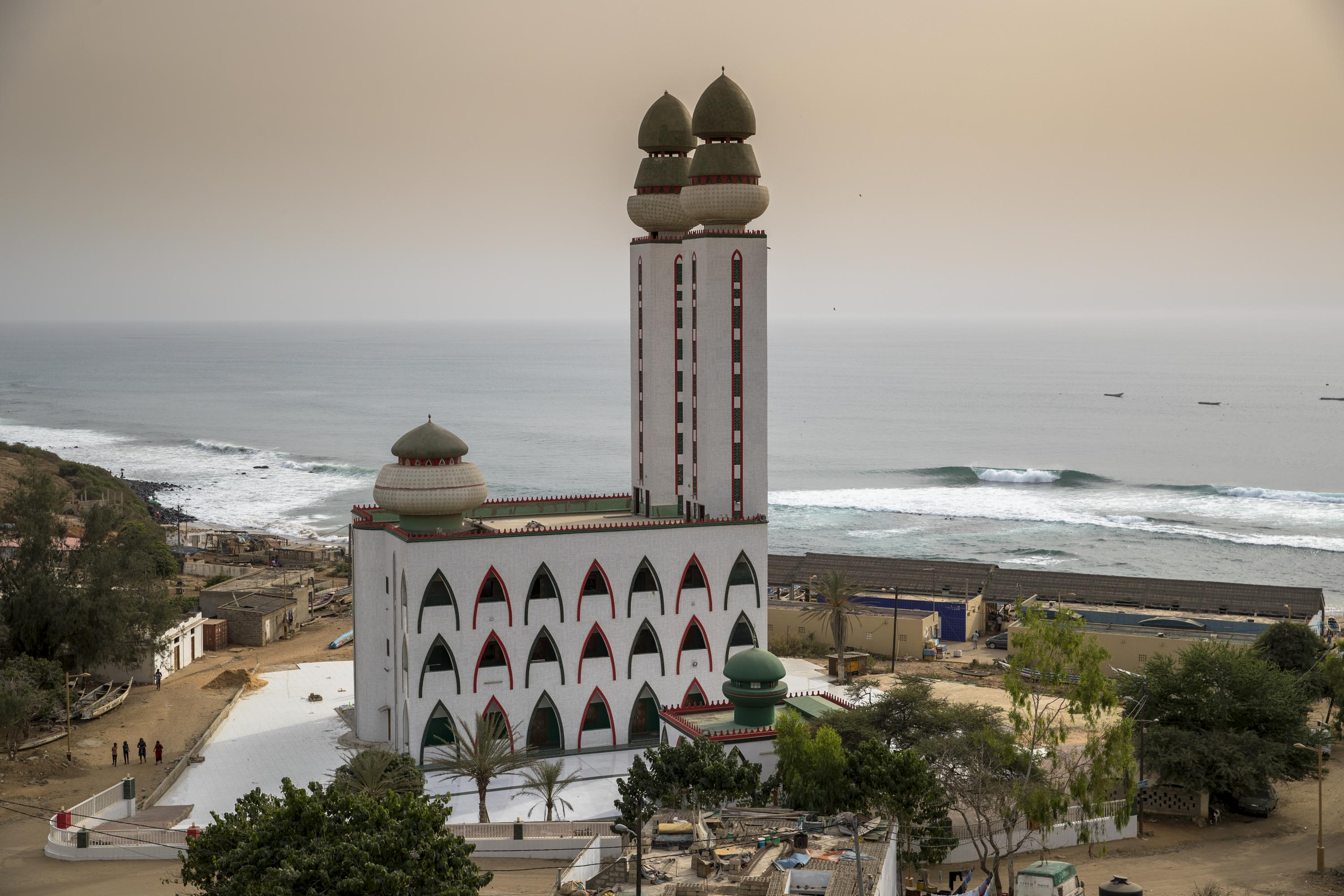
When considering the term “surf trip,” emphasis should be on the trip part. Photo: Alan Van Gysen
For example: Guy number one comes in hot. And loud. Accessorized and accentuated. Emblems and entourages. Puffed-up posture and permanent stink-eye. He bullies and bitches, back-paddles and burns his way through the lineup. And his malignant presence is felt long after he’s gone, thanks to all that posting, sharing, labeling and geotagging the place he just polluted.
Guy number two does none of that shit.
Now, ask yourself, which are you? As explained by a recent ccn report, ‘Travelers Behaving Badly: Is the conduct of tourists getting worse?’: “According to tourism expert Dr. Peter E. Tarlow, some travelers are likely to behave out of character while in a new destination due to the excitement and the anonymity of being somewhere seemingly unconnected to their everyday lives. ‘Being away from home, travelers tend to lower their inhibitions, standards and behavior,’ he wrote in his 2018 book Tourism-Oriented Policing and Protective Services. ‘Because many travelers enjoy their feeling of anonymity, they are more willing to engage in rude, semi-legal or even illegal activities about which they would not engage at home.’”

In the dark and off the grid — there are certainly worse ways to begin a surf trip. Photo: Jeremiah Klein
In other words, most surfers do indeed know right from wrong, but some prefer to abandon that knowledge as soon as their hometown’s in the rearview. “You can tell a lot about a surfer’s character by the way they engage a lineup,” says ubiquitous South African surf photographer Alan Van Gysen, who’s as famous for his gregarious integrity as his captivating imagery. “Is there anything more frustrating than being out at your homebreak when an outsider paddles out, behaves badly and shows no consideration for others? No traveler should ever arrive hot and heavy to a new destination — no matter their froth level, excitement or good vibes. A considerate, calm approach is key if you want to build trust and respectfully immerse yourself in the lineup and the community.”
“I’ve worked with a lot of professional surfers in many locales around the globe,” Alan continues, “and the two who stick out most of all are Dane Reynolds and Dane Gudauskas. Dane Reynolds sits quietly and patiently. He waits his turn, almost to a fault, and lets his incredible surfing do the talking until, eventually, those around him give him waves to have the rare opportunity of watching the world’s best on display. And with his disarming smile and welcoming demeanor — spray-painted smiley-face tent and all — Dane Gudauskas really engages those around him, and invests in meaningful relationships verbally. Despite their differences in style and approach, both Danes are always welcome in a foreign lineup, because they know that respect and place is earned by respect and pace.”
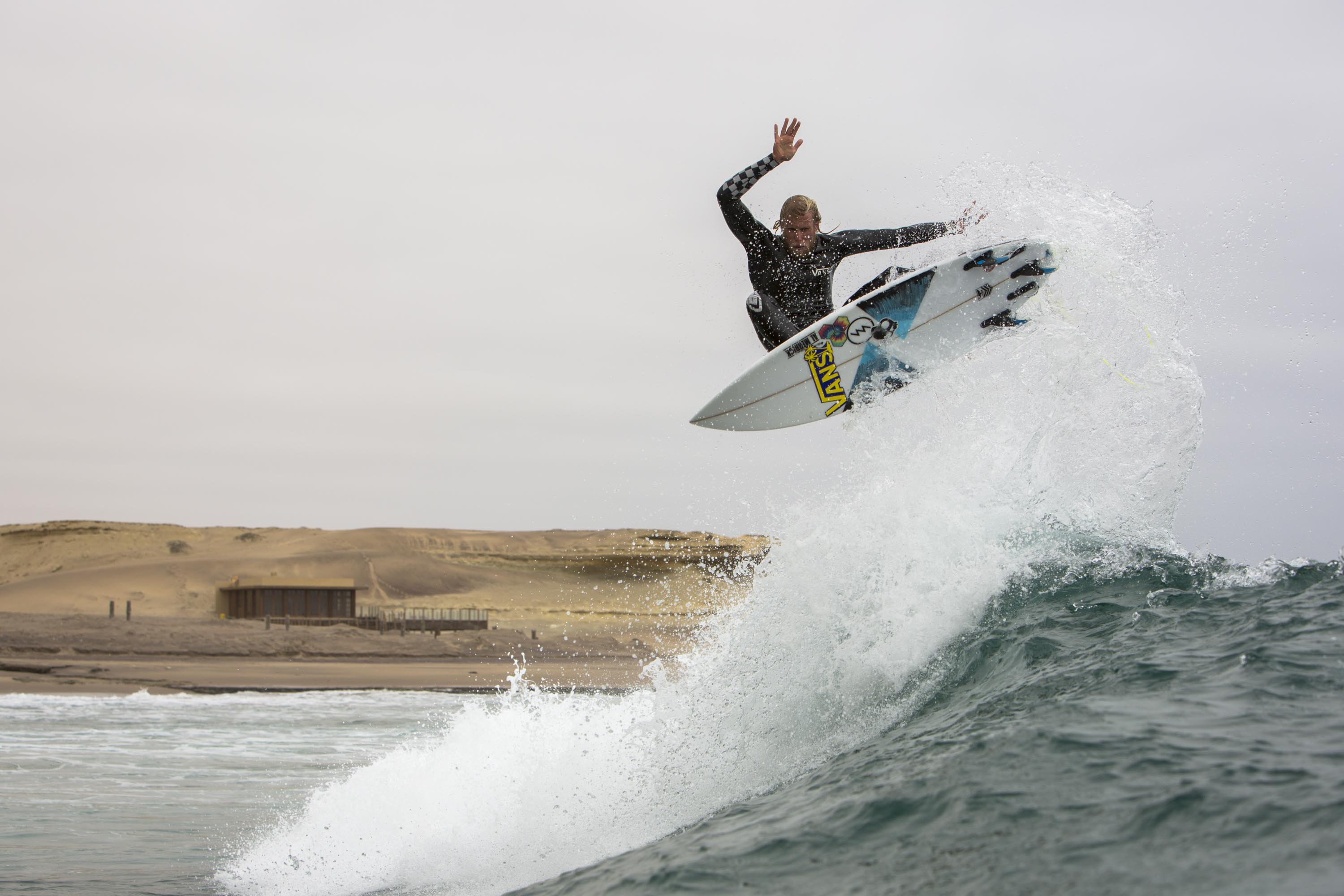
“Don’t take a poo-poo where you eat,” says Dane, clearly surfing Lowers here. “Not everything needs to be on everybody’s radar all the time.” Photo: Alan Van Gysen
“Since there were three of us growing up surfing together, my brothers and I were really conscious of that, long before we became professional-level,” says Dane, whose attitude and outlook is best reflected in the Gudauskas’ philanthropic nonprofit, Positive Vibe Warriors Foundation. “We were always tuned into not making a giant splash when entering the water, because we were already on the radar as three towheaded kids running down the beach to Lowers. It’s simple: when you travel around the world, or even just outside your community, hopefully you’ll experience something that makes you want to go back there and do it again and again. And if you burn the wick too hot, you may not be able to. But if you’re conscious of the fact that everyone’s out there for the same reason — to enjoy the waves — and you’re thankful for the opportunity to hang out with different people at their spot, chances are you’re gonna make friends and be welcomed back.”
On the other end of the spectrum, South Carolina pro Cam Richards was the big fish in a small pond from the start, the natural byproduct of good ol’ boy Southern hospitality and restless underdog grit. His father, Perfection Surfboards shaper/shop-owner Kelly Richards, put him on the fast track early, while keeping the grom’s ego in check throughout his stellar amateur career and beyond. Today, Cam Richards is #38 on the Qualifying Series. And one of the best Pipeline surfers the East Coast has ever produced.
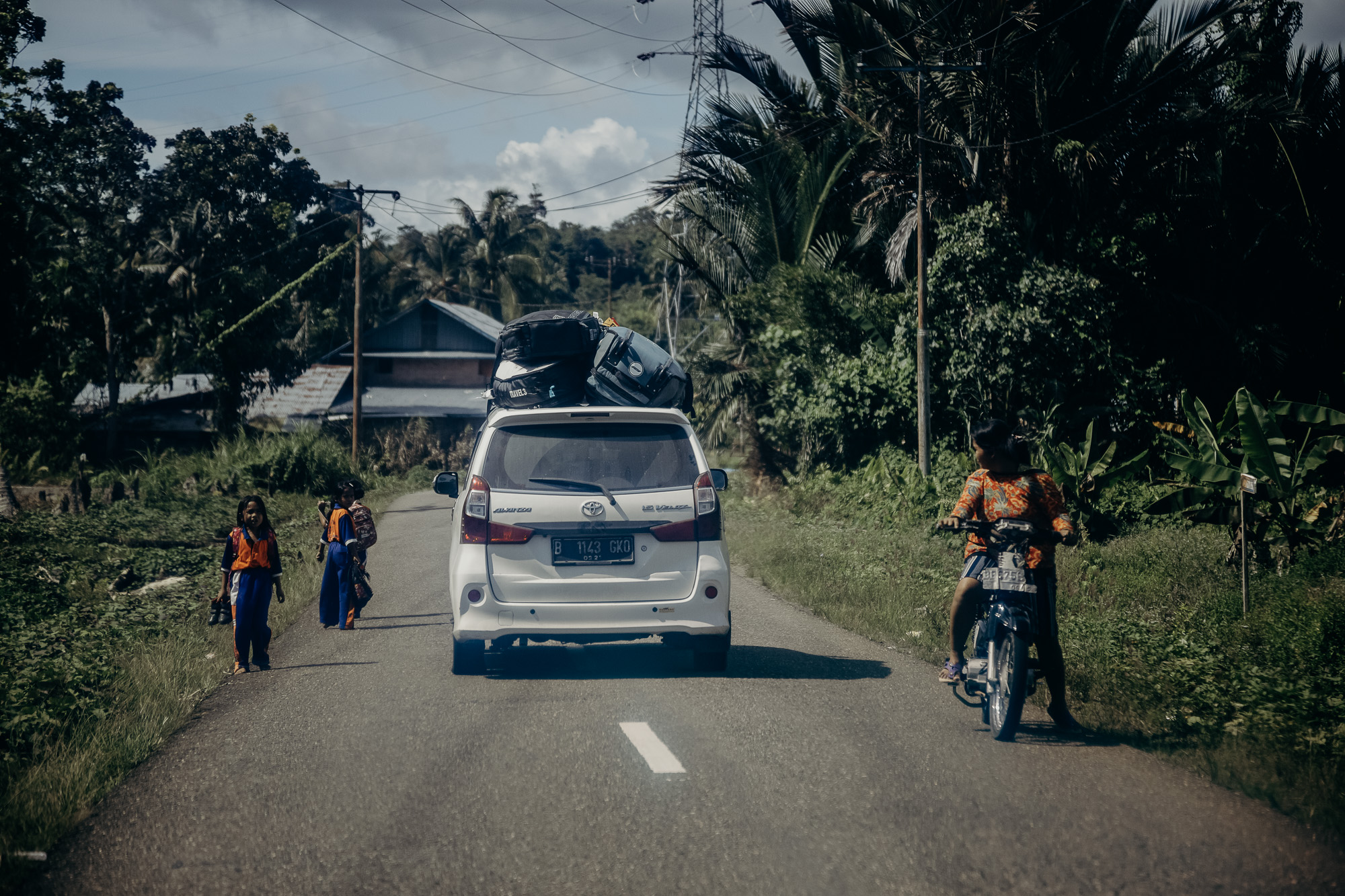
Respect is a two-way street. Photo: Jeremiah Klein
“I’m sure I was quite the shithead when I was real young,” Cam admits. “My best friend always reminds me, ‘You were such a nightmare as a little kid,’ but I think that came more from my competitiveness. The weird thing about where I was raised is that surfing wasn’t very big, and we never had good waves, so most people didn’t understand surf etiquette. But no one ever got mad, either. Then I went on a trip with my dad and some Billabong people and learned very quickly that it was better to be the quiet kid than the loud, obnoxious one. Whenever I traveled, I always felt like I was walking on eggshells, like, ‘Okay, I need to stay quiet, stay out of people’s way, and take whatever scraps I can get.’ I never wanted to paddle under people and stuff, because I was so afraid of causing a scene. My dad always told me, ‘Treat people how you want to be treated.’ Once I learned how to translate that into surfing, I gained a lot of friends and people would give me waves.”

A dry run is never a bad idea for a pro. “Just go hang out, meet everybody, show them you’re willing to be one of the boys, and hopefully get work done next trip,” says Cam. “Either way, you’ve made good friendships.” Photo: Jeremiah Klein
And while this narrative might seem more directed towards the pro, semi-pro, sponsored or otherwise emblazoned surfer, who are probably multiplying faster than their kooky counterparts — the garden variety shred-head can also benefit from Cam, Dane and Alan’s combined wisdom. Because every one of us is a reflection of something bigger — if not the brands we ride for then the country or town where we grew up, or the parents who raised us, or the bros that humbled us. Whether it’s right outside the county line or halfway across the globe — everyone’s a foreigner at some point.
Be antisocial beforehand.
Cam: I don’t like surfing with a lot of people, so I’ve never been fond of talking about a strike mission or hyping a trip up before it happens on social media. These days, a lot of people will post on Instagram from an airport or wherever about a swell coming to an area they’re headed to — “Looking forward to more of this!” — like they’re already there. But by doing that, they could bring other people that otherwise wouldn’t have the knowledge to go there. And if big groups do show up, 100% of the time the locals will blame the pro surfer that’s there: “You brought this! You told everyone! You posted that!” So, you always want to try to avoid that at any cost, and make sure there’s no way it can ever come back to you. It’s always best to stay silent, and just show up.
Dane: I’ve never felt any pressure from my sponsors or anyone else to post something on social media indicating exactly where I am. It’s not necessary, and it can be frustrating for everyone else involved. It’s a weird thing for pro surfers, because that’s kind of their job — to show where they’re at and what they’re doing. Everyone plays their cards differently, and everyone makes mistakes. But some people just lend themselves to situations where they’re going to get in trouble.
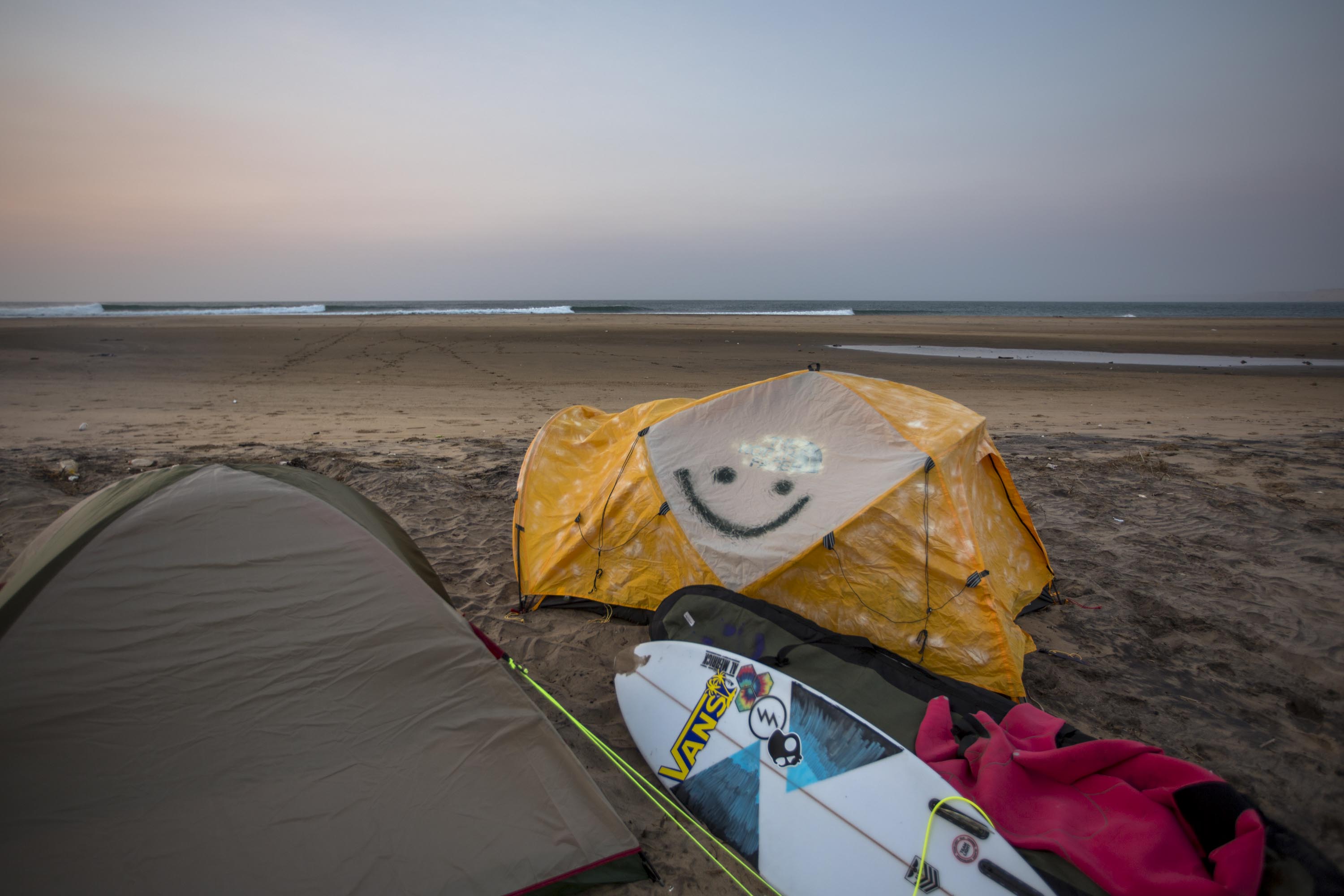
Angola. Photo: Alan Van Gysen
Alan: I don’t think it’s ever a good idea to post on social media or publish online before and during a trip. I feel like this behavior leads to more crowds and unhappy resident surfers who’re immediately less receptive to you being there, or coming back. It feeds the negative, superficial, attention-seeking society we increasingly find ourselves in, and it distracts you from really engaging and enjoying the trip without these kinds of concerns and strings attached. Enjoy your trip, build genuine relationships, and afterwards, consider the most appropriate way to share your experience with the world — one that makes your trip a success but doesn’t negatively affect others in the process.
If it’s famous…
Alan: I think it’s crucial for anyone traveling to a new location to connect with the residents and committed surfers — for both their own experiential success and the well-being of long-term relationships. It’s a no-brainer that the trip will be easier and richer when shared with, and with thanks to, their experience and advice. Rocking up with a respected member of the community will immediately put you in good standing with others, even before you open your mouth on the beach or paddle out to the lineup.
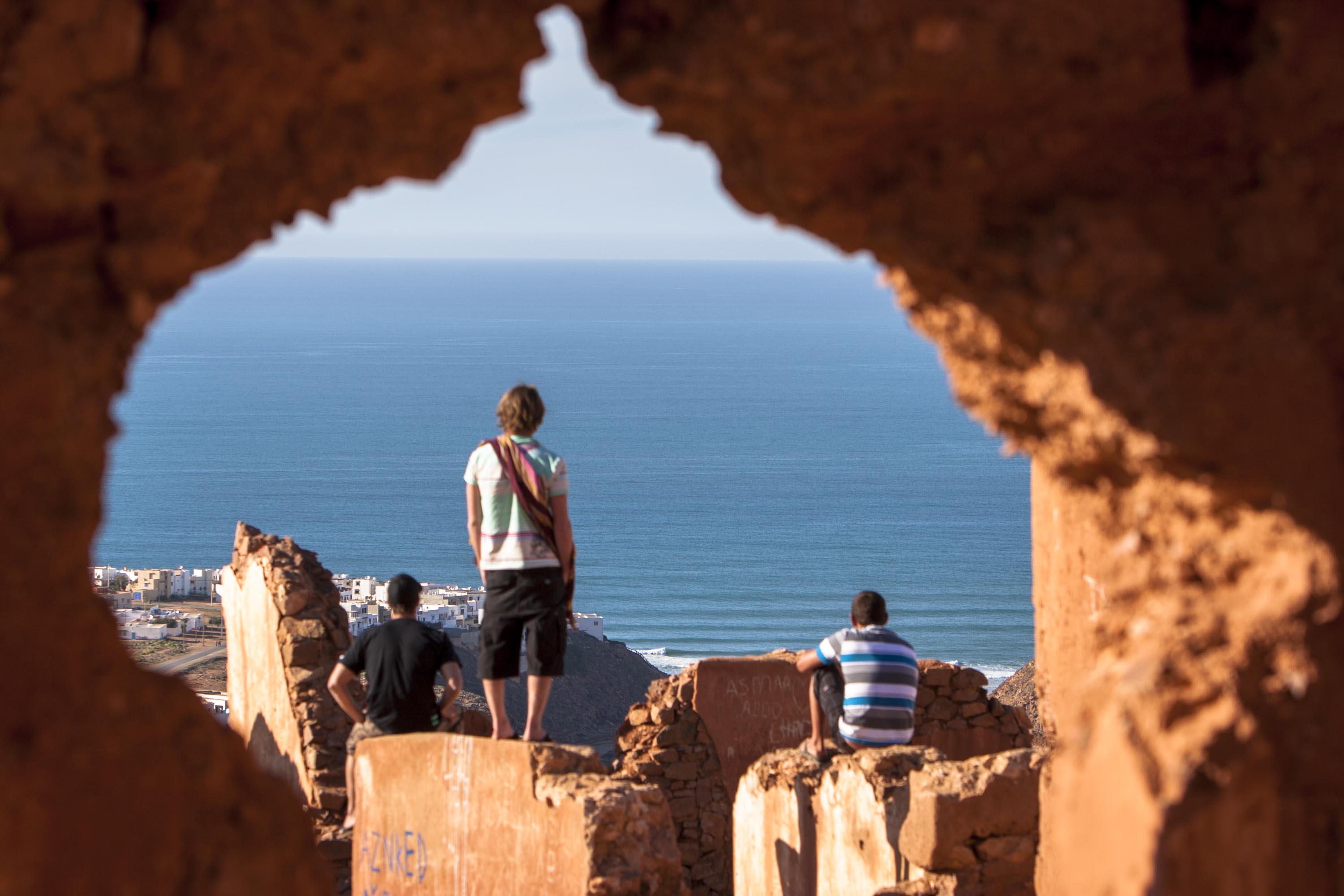
Stop. Breathe. Listen… Now, feel that sizzle? That’s your soul waking up. Photo: Alan Van Gysen
Cam: Who knows how much time I’ve spent sitting out at Pipeline over the years, and to be completely honest, the first time I ever got any real waves out there was in my heats at the Volcom Pipe Pro. I never got anything close to what I got in that contest. Not that I didn’t feel welcome, I just didn’t feel like I was ready. I was out there just to be out there, trying to learn as much as I could. So I’ve never had any problems with any locals. I mean, that Wave of the Winter contender I got last winter, Eli Olson was the one who told me to go on it! Hawaii is actually very fair. People complain about the pecking order, but anyone who’s shown respect out there and taken big waves that didn’t need to be taken — like closeouts — just to be able to ride a wave, has gotten that respect back.
Dane: I have this philosophy: “Little circle, little circle, big circle.” Whenever entering a localized lineup, I first try to understand the way it’s flowing, then integrate. Paddle out slow, get into that flow state without disrupting anyone else’s rhythm, then work the inside over. If you start your surfing experience off by riding waves on the inside, you’ll get into your own rhythm without being on everyone’s radar. You’re not taking any premium set waves out of anyone’s hands — you’re just integrating into the lineup naturally. Then you’re riding waves, people are getting familiar with you, and all of a sudden you’re in position for a set. And if you commit to that set wave and ride it well, that can help garner respect in the lineup.
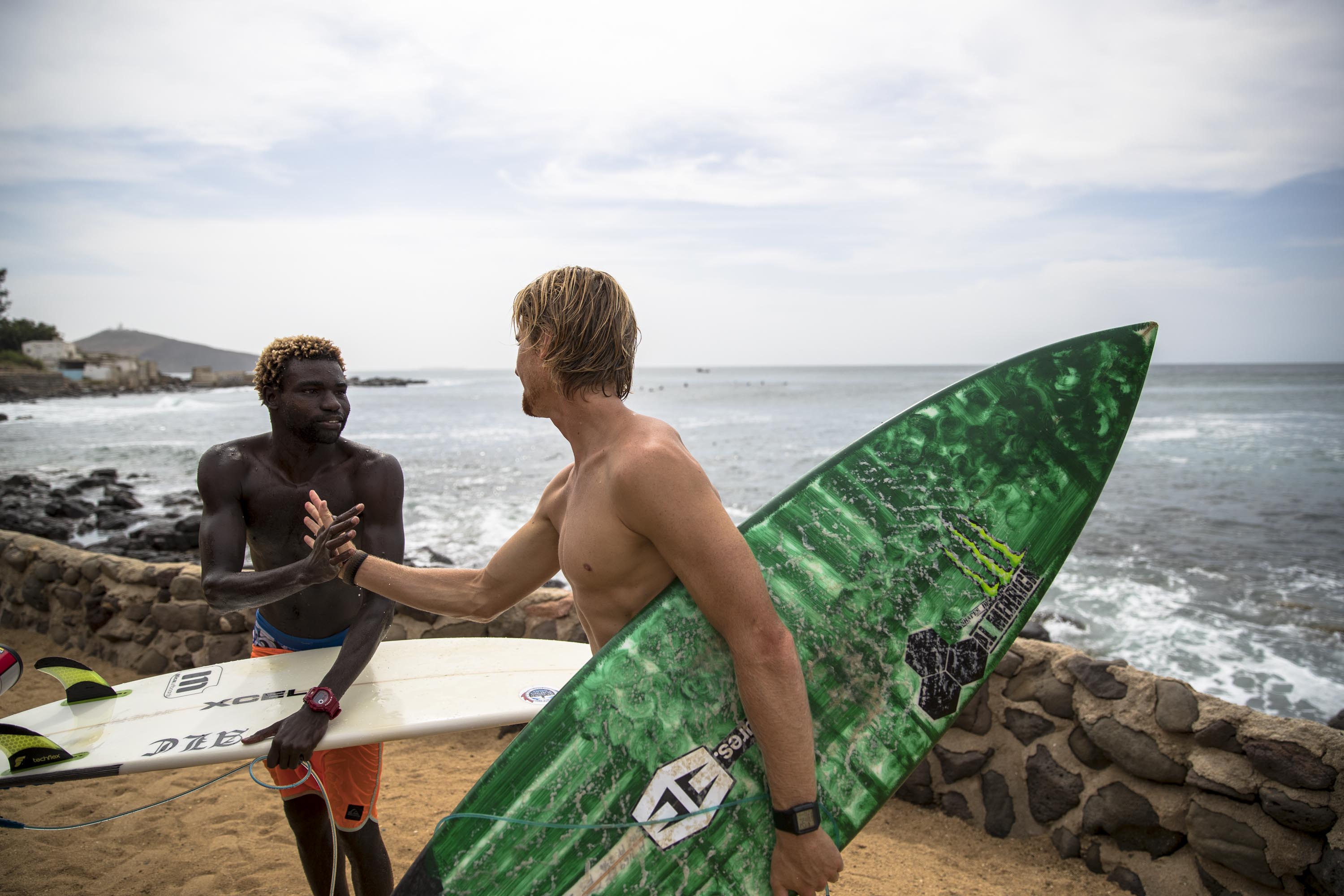
A precious local contact starts with eye contact. A little hand contact can’t hurt, either. Photo: Alan Van Gysen
If it’s secret…
Alan: When researching any new location and planning a trip, it is both prudent and crucial to heed advice from contacts about the rules of engagement — from filming etiquette to driving on the beach to using a ski in sensitive areas. When entering another person’s space and place, especially when information and imagery is so quickly and freely shared, you shouldn’t expect to control or hide your operation from the outside world. Just communicate with individuals and request everything be kept confidential. But you can only ask, and should not demand this. Likewise, you should not control or hide your operation from the resident community. You need to include them, so they can include you.
“If someone else shares their backyard with you, it only seems right to share something in return.”
Cam: If you’re shooting somewhere you maybe shouldn’t be, or kinda know you’re doing something weird, it’s almost better not to hide it. Because if you get caught, you just look more guilty and are asking for a fight. Even if it’s a place that people know about or have documented in the past, if someone comes up and tells you, “Hey, we want you to put the camera away,” you gotta say, “No problem at all. Sorry,” and move on. Being honest with everyone, understanding their point of view, and talking to them like a friend — that’s your best bet.
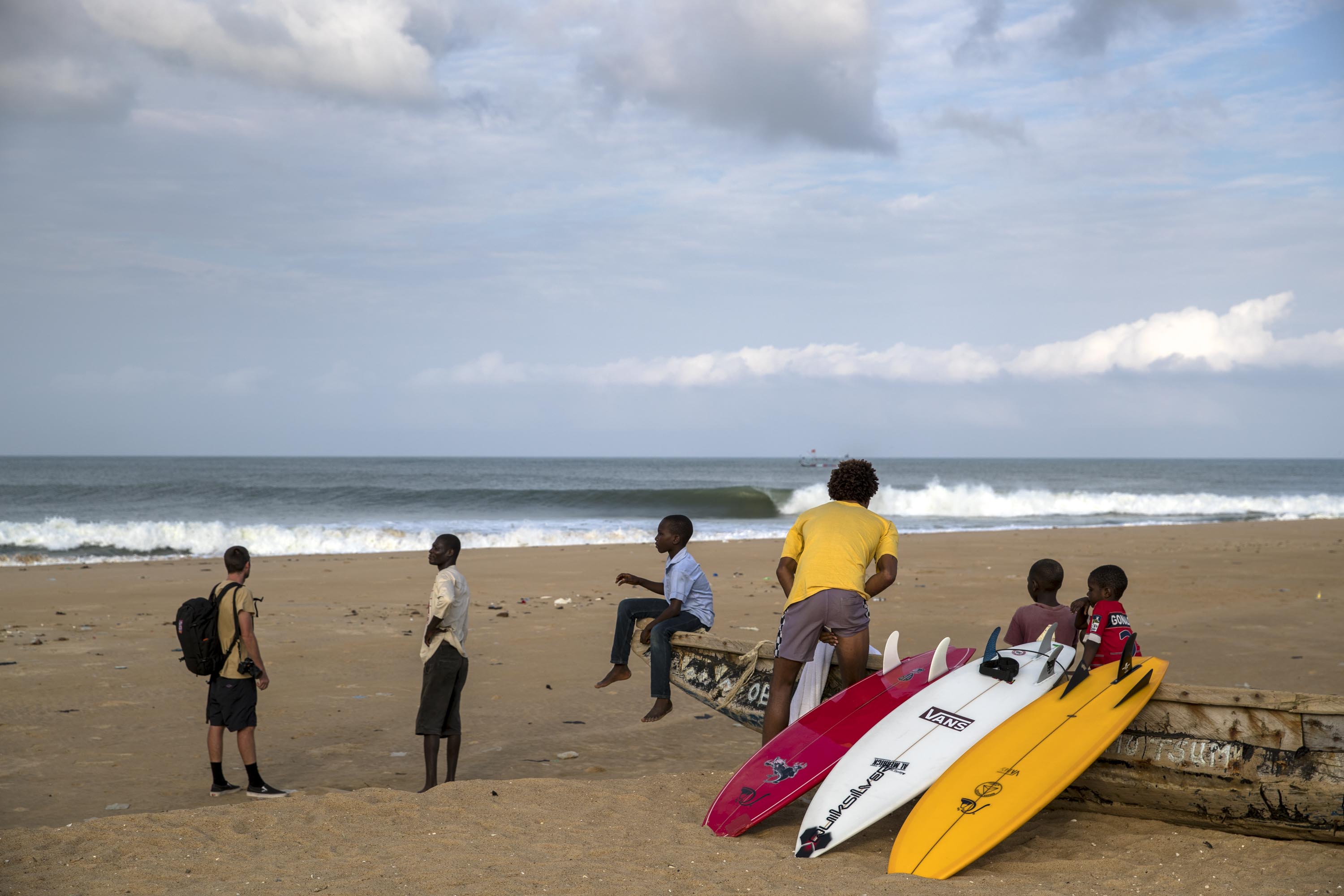
Let’s hoping that, after the trip, he left one or two of his surfboards behind for the local grommets. That’s pretty much the coolest thing a surf tourist can do. Photo: Alan Van Gysen
Dane: If you’re rolling with the camera, be smart. There’s plenty of opportunity for a surfer to exist and shoot really cool waves that are already on the radar. But if there’s a new wave that’s under wraps for whatever reason, and the community wants to keep it that way, just don’t shoot it! Not everything needs to be on display for other people to see, and you don’t have to be the one to expose it. Let certain things be the way that they are.
Don’t just send it — give it.
Alan: The best way to connect with people at any new location and find a place in their community is to build meaningful relationships, which happen organically with genuine and consistent communication. Like anything important in life, there aren’t any shortcuts. Engage and communicate before, during, and long after trips and swells have come and gone. I also think it’s a great gesture of consideration and thanks to gift photographs or video clips to residents. If someone else shares their backyard with you, it only seems right to share something in return.
Cam: If you’re with a filmer, tell ‘em to film the local dudes, too. Everyone loves to see themselves surf, and it’s a good call to stoke them up, if possible. And of course, people love compliments, but at the same time, you don’t need to be too over-the-top. They’re not dumb, they know what you’re doing, and this isn’t the first time they’ve seen an outsider surfing their wave. A couple shakas and a “hello” here and there go a long way. And when the first set comes your way, don’t go. Give it to another local who’s also paddling for it, then wait for one they want you to go on. You’ll feel it when it’s time, and a session is always better if everyone’s in a good mood.

Set waves come and go, but gestures like this live forever in your heart. Photo: Alan Van Gysen
Dane: I look at it like, the more other people are riding waves, the more waves you’ll eventually ride yourself, because that means everyone is moving through the lineup. So it’s actually in your best interest to get people on waves. You can’t assume there’s no pecking order. Be conscious of all the existing elements, and show respect to each individual. It’s impossible to please everyone. Someone’s always going to think you’re catching too many waves or X or Y or Z. And as a higher-level surfer, you’ll consistently find yourself on the better waves, which can be frustrating for other people. Obviously, being a professional doesn’t entitle you to any sort of extra benefit, or guarantee you any more respect, even if the other surfers’ levels aren’t as high. It’s important to remember that they’re out there to experience the same thing you are. So get everyone involved, and make it a full jam session!
Fool disclosure…
Alan: For locations with long-established resident surf communities, disclosing specific and even non-specific locations by publicly thanking locals who’ve assisted you is almost never well received. It’s a very controversial and individualistic issue, especially when accounting for surfing’s single-worst attribute: selfishness. If the lineup you’re entering is devoid of resident surfers, and the community of non-surfers can benefit from ethically sound surf tourism, then in my opinion, disclosing those locations and giving thanks to their community could and should benefit them. In fact, I’ve often been asked to do just that. But the execution is never as simple and the future never ideal as initially intended. It inevitably leads to resident surfers, who down the road might wish that disclosure never happened or should never happen in the future. In such instances, it’s always recommended to bring this up during conversation with residents while nurturing meaningful relationships.

Cam Richards. Photo: Jeremiah Klein
If you’re close enough to someone that’s from there, it’s always a good idea to give ‘em a heads up. Then come alone, or maybe with one other guy. If you come to town with no notice, raising hell with a bunch of people, then there goes your respect with the whole community, and the one buddy that can get you out of trouble is mad at you now. Even if I’m just going to the Outer Banks, I’ll hit up Brett Barley and tell him I’m coming. But if it’s a wave that could possibly get me in trouble, I’m either going with the main person that lives there, or I’m not going. It’s just not worth it.
“If you walked into a random bar on the road, you wouldn’t immediately play whatever you want on the jukebox and start hitting on every girl in the bar. You’d keep your head down, order a beer and enjoy the scene.”
Dane: The whole shooting thing can be a bummer. Some people are really sensitive to it, while others are just gonna do what they want either way, and assume the consequences. They’ll come to a spot feeling all this pressure — I really need to get this clip today — but that creates a disruptive experience, and it’s hard to create something beautiful in chaos. I just respect what’s in place. If something’s prohibited and that’s just the way the ecosystem works there, there’s plenty of other places where there’s room to negotiate. Asking permission is always good: “Wow, it’s fun out here. You guys mind if we bring the cameras out later?” It might sound ridiculous for a pro surfer, but sometimes it’s best to remove yourself from all that, just relax and let it come to you: Maybe tomorrow, maybe next week… You will surf another day! There will be more trips. More swells. All the eggs aren’t in one basket. Think about the long play rather than the short play, if you hope to ever return and have people be somewhat happy to see you again.

No device needed on this journey. The ol’ analog GPS works just fine. Photo: Alan Van Gysen
Kill the pantomime.
Cam: Body language is super important, right down to the way you paddle. You don’t need to be kicking and splashing water just to catch a wave. And if you’re having a bad session, keep a smile on your face. Don’t yell, don’t cuss, don’t punch your board — none of that. That’s a terrible look. When I was 14, I almost got beat up in Bali because I flipped off a wave, and some dude thought I was flipping him off. Next thing I know, I’m holding my board up to keep him from punching me, like, “Dude, I was just mad at the wave!” As fun as it is, surfing really is a frustrating sport, and sometimes you can let your emotions get the best of you. But if there’s another living soul anywhere near you, you should keep that stuff to yourself. Stay mellow, stay chill, and enjoy it. Show the locals that you’re grateful just to be out there. You can always go underwater and scream at the top of your lungs.
Be the metaphor.
Dane: It’s the same as any other social situation, whether it’s a bar or a basketball court. If there’s people already playing, you don’t just jump in there and start making a mess trying to be the head honcho. If you walked into a random bar on the road, you wouldn’t immediately play whatever you want on the jukebox and start hitting on every girl in the bar. You’d keep your head down, order a beer and enjoy the scene. And if someone in there is having a bad day, [laughs] well, you might not wanna poke the bear. Surfing’s supposed to be fun, that’s why we do it. By sharing it with others and encouraging everyone to have a good time, your personal experience will be that much better. I promise you that.

Nicaragua. Photo: Jeremiah Klein
Leave on a high note.
Alan: As a passionate traveler and photojournalist of 20 years specializing in off-the-beaten-path destinations, I have been on the receiving end of more than a little backlash and criticism from the trips I’ve produced and the content I’ve published. It comes with the job description, and in all honesty, if I had to do any of these trips again, I wouldn’t change a thing. If there’s one thing I’ve learned from all the years on the road, it’s that surfers — like humanity in general — need to engage more, share more and ultimately love more. Because when we do that, lives are changed, and we receive so much more than we give. While others search for what they can take, a true human searches for what he can give.
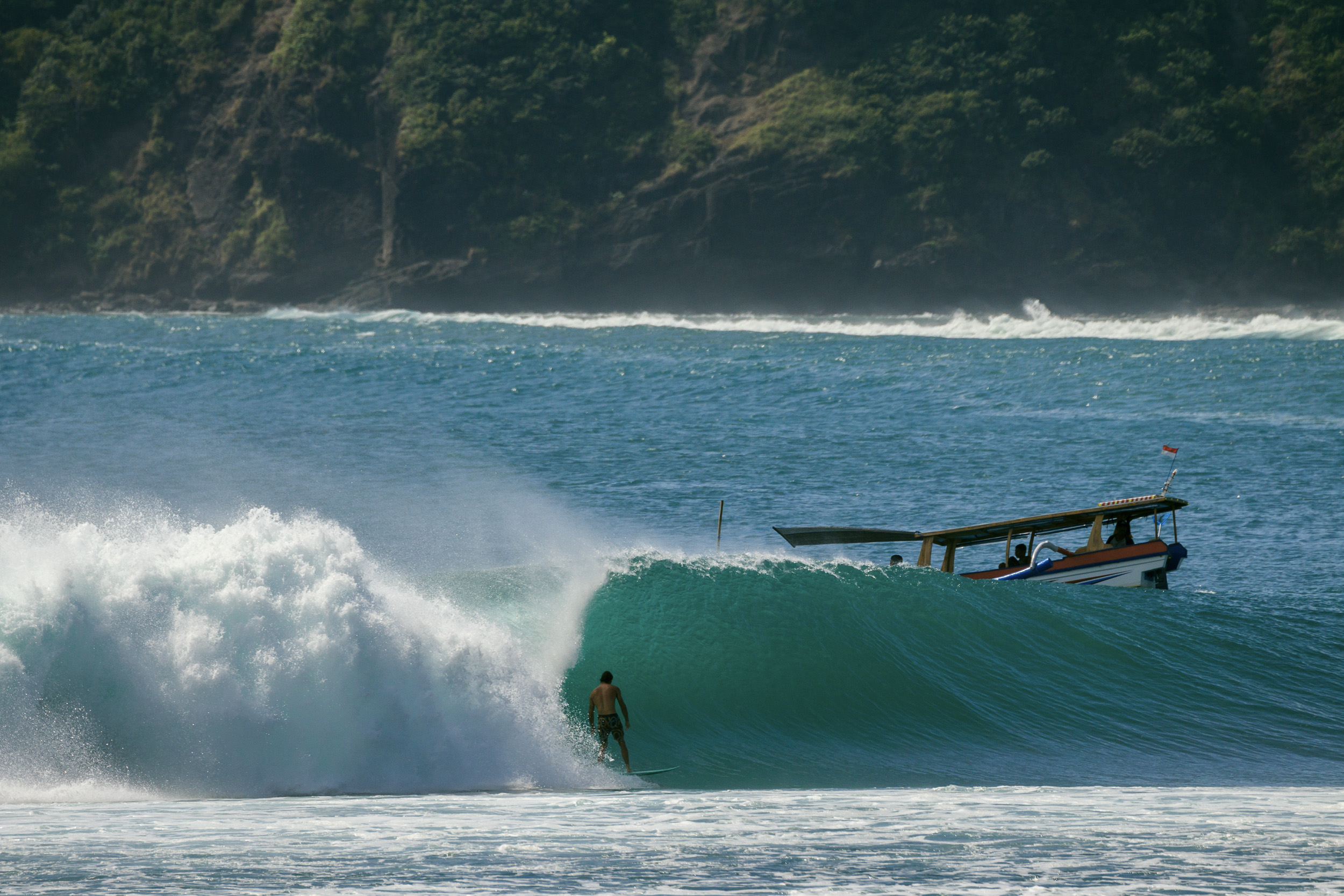
“It’s pretty simple,” Cam finishes. “Shut up. Smile. Take the whitest board and blackest wetsuit you got. Wait your turn. Be nice to everyone and just cruise.” Photo: Jeremiah
Original story by Surfline

